Development of new technologies and products
World-leading Technology Supported by the Latest Equipment
Through persistent research and development, Amatsuji Steel Ball Manufacturing Co., Ltd., is developing not only steel balls but also various other new technologies and products. Here we introduce a selection of these.
-
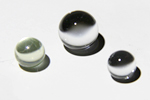
Optical glass balls
These balls are incorporated into camera and other lenses as well as telescopes and require extremely high processing technology.
→For details, please visit our “Glass Balls for Optical Lenses” page. -
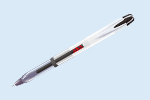
Ultra hard 0.18 mm-diameter balls
Through joint development with a Japanese stationary supplier, we created the world’s smallest ballpoint pen containing a ball measuring just 0.18 mm in diameter.
-
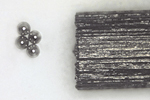
Steel balls measuring 0.1 mm in diameter
Grinding enables the production of steel balls measuring 0.1 mm in diameter. The photograph shows the size of these balls compared with the 0.5 mm diameter lead of a mechanical pencil.
-
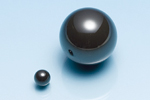
Ceramic master balls
“Master balls” are standard balls used for measuring dimensions in precision machinery; the term refers to balls with extremely high sphericity. Our master balls are made from ceramic materials (silicone nitride), and we are proud to manufacture balls with the world’s highest degree of sphericity.
COLUMN How round? Comparing the sphericity of the Earth, AKS steel balls, and master balls
For example, the Earth—floating in space—has a sphericity of 99.66%. This is regarded as being extremely close to spherical, but in fact, there is a difference of 43 km in the Earth’s diameter at the Equator and at the Poles.
In comparison, AKS’s general steel balls (Grade 20) have a sphericity of 99.999%. Enlarged to the size of the Earth, the difference in diameter between the Equator and the Poles shrinks to 134 m.
Furthermore, master balls have a sphericity of 99.99995%! Enlarged to the size of the Earth, the difference in diameter between the Equator and the Poles is a mere 6.5 m.
Earth—floating in space—has a sphericity of 99.66%
AKS’s general steel balls (Grade 20) have a sphericity of 99.999%
Our state-of-the-art analysis equipment (some examples)
Here we introduce some of the state-of-the-art analysis equipment that supports our company’s product and technology development.
-
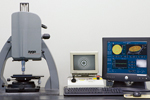
Non-contact three-dimensional profilometer
This device can measure the surface roughness of steel balls without touching them and displays them three-dimensionally.
-
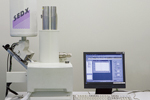
Scanning electron microscope
This device performs high-magnification observation of microstructures and qualitative analysis using EDX (energy-dispersive x-ray).
-
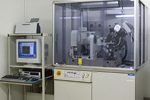
X-ray diffractometer
This device measures residual stress and residual austenite levels of steel balls.
-
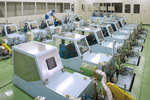
Life testing machines
This testing device evaluates the rolling fatigue of steel balls.